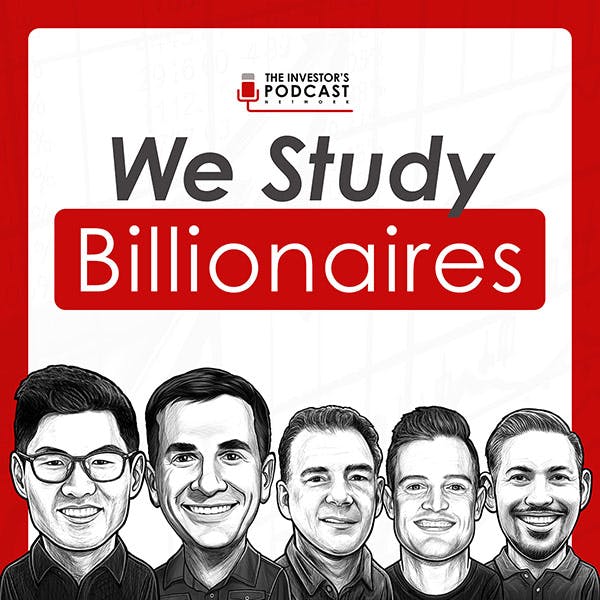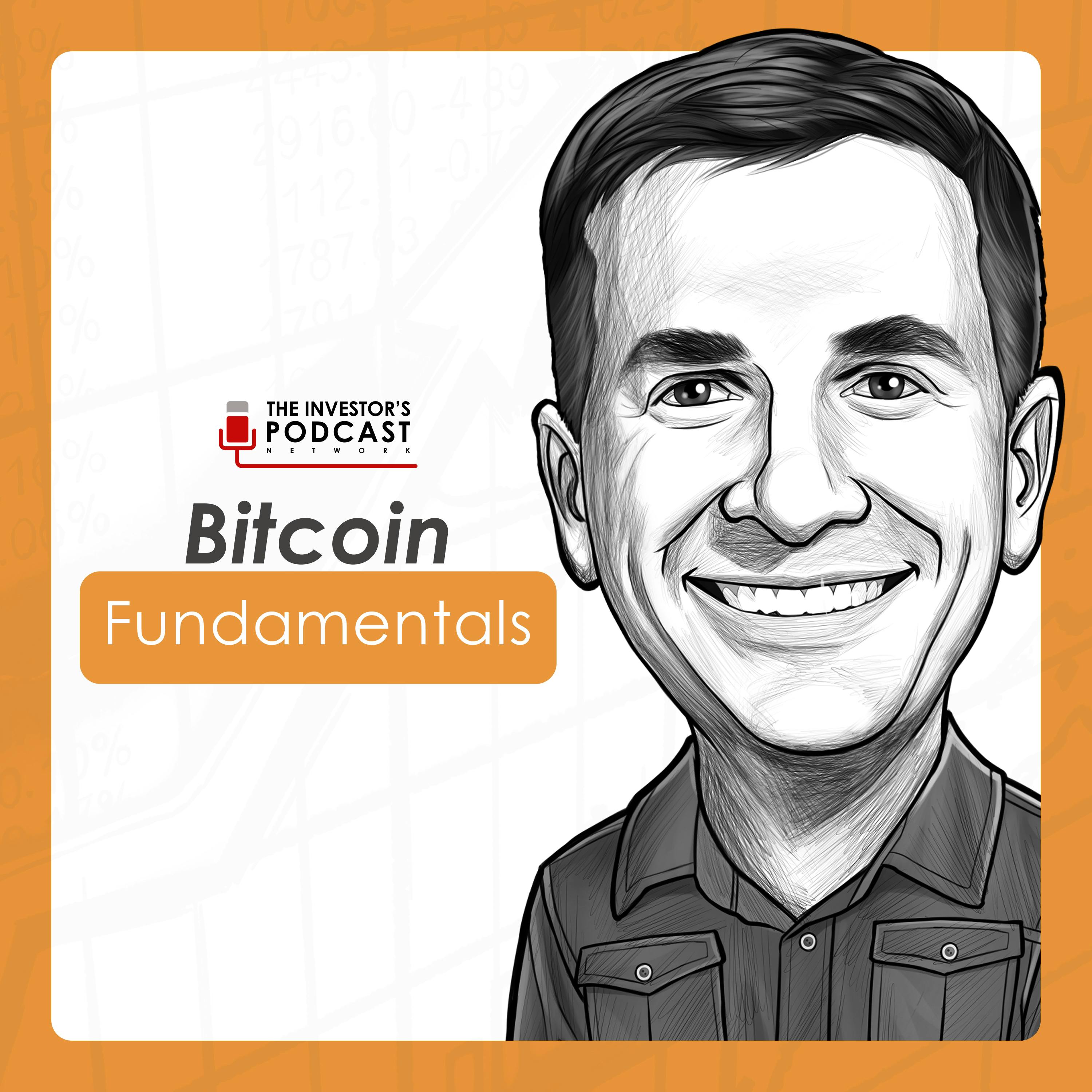
September 13, 2024 • 1hr 42min
TIP659: Hermès Stock Deep Dive w/ Shree Viswanathan
We Study Billionaires - The Investor’s Podcast Network

Key Takeaways
- Hermes is a prestigious luxury brand renowned for exceptional craftsmanship and rich heritage, founded in 1837 as a harness workshop
- The company has 16 "metiers" (specialized crafts) and produces products in 4 main categories: leather goods (50% of sales), ready-to-wear (23%), silk/textiles (10%), and watches/jewelry/home goods
- Hermes is still controlled by the founding family, with 67% ownership split between three branches. This family ownership and control is a key part of the company's long-term focus and success
- The company has an intense focus on quality and craftsmanship. For example, it takes 40 hours to make one Birkin bag, and artisans undergo years of training
- Hermes has strong pricing power, typically raising prices 5-10% annually. The Birkin bag has appreciated 4% annually for 50 years
- The company has a very strong moat based on brand power, craftsmanship, and controlled distribution. There are often multi-year waitlists for iconic products
- Hermes trades at a premium valuation (P/E of 50) but has consistently delivered strong growth and returns. The stock has been a 400-bagger since its 1993 IPO
- Key risks include reputational damage and potential changes in luxury consumer preferences, especially among younger generations
Introduction
In this episode, host Clay Finck interviews Shree Viswanathan, founder of SVN Capital, for an in-depth discussion on luxury icon Hermes. They explore the company's history, business model, competitive advantages, growth prospects, and valuation.
Hermes was founded in 1837 as a harness workshop in Paris. It has since evolved into one of the world's most valuable luxury brands, known for products like the Birkin and Kelly handbags. The company went public in 1993 but is still controlled by descendants of the founding family.
Shree owns Hermes in his fund and takes a long-term, concentrated approach to investing. He provides insights into what makes Hermes unique among luxury companies and why it may continue to be a compelling investment despite its premium valuation.
Topics Discussed
Business Overview and History (2:38)
Shree provides an overview of Hermes' business:
- Founded in 1837 as a harness workshop, evolved into a global luxury powerhouse
- Known for meticulous craftsmanship and artisanal skills
- Has 16 "metiers" (specialized crafts)
- 4 main product categories:
- Leather goods (50% of sales) - includes iconic Birkin and Kelly bags
- Ready-to-wear (23%) - clothing and accessories
- Silk and textiles (10%) - scarves, ties, etc.
- Watches, jewelry, home goods
- 90% of production exported, but 75% still made in France
- 54 production sites across France, 23,000 employees (7,000 artisans)
- 300 stores in 45 countries
Shree notes that Hermes has compounded at over 20% annually since its 1993 IPO, making it a 400-bagger.
Long-Term Thinking and Quality Focus (10:28)
Clay and Shree discuss Hermes' intense focus on long-term thinking and quality:
- Quality is paramount - products made to last decades
- Craftsmanship highly valued - artisans undergo years of training
- 40 hours to make one Birkin bag by a single artisan
- CEO Axel Dumas: "We want our products to look even more beautiful 10 years later."
- Rejected consultants' advice in 1970s to cut costs/quality
- Corporate philosophy of "no consultants"
Shree shares an anecdote about an artisan standing up to the Empress of Japan's request to modify a bag, showing Hermes' commitment to product integrity over pleasing VIPs.
Family Ownership and Control (20:06)
Hermes remains controlled by the founding family after 187 years:
- 67% owned by three branches of founding family
- Current CEO Axel Dumas is 6th generation family member
- Family ownership worth ~$155 billion
- Went public in 1993 to raise capital and allow some family members to sell
- ~80% of employees also own shares
Shree notes family businesses that survive to 6th generation are extremely rare. He argues this long-term family control is a key competitive advantage for Hermes.
Attempted Takeover by Bernard Arnault (30:16)
Shree recounts the dramatic story of LVMH's Bernard Arnault attempting a hostile takeover of Hermes:
- 2010 - Arnault revealed 14.2% stake in Hermes, shocking management
- LVMH had secretly built stake through subsidiaries over years
- Hermes family fiercely resisted takeover attempt
- Created holding company to pool family shares
- Legal battles ensued for years
- 2013 - LVMH agreed to distribute Hermes shares to its investors
- 2022 - Hermes created new structure (H51) to further unify family control
This episode demonstrated the family's commitment to independence and long-term control.
Hermes' Competitive Moat (37:59)
Clay and Shree discuss the sources of Hermes' strong competitive advantages:
- Brand power and heritage - 187 year history
- Exceptional quality and craftsmanship
- Controlled distribution - own retail network
- Scarcity/exclusivity - long waitlists for iconic products
- Pricing power - able to raise prices 5-10% annually
- Family control enabling long-term focus
Shree notes the Birkin bag has appreciated 4% annually for 50 years, outperforming gold and the S&P 500 as a store of value.
Growth Opportunities (56:01)
Key growth drivers for Hermes include:
- Expanding in China and Asia - currently ~50% of sales
- India potential - only 3 stores currently but luxury market growing rapidly
- Other emerging markets - Southeast Asia, Africa
- Price increases of 5-10% annually
- New product categories - experimenting with mushroom-based leather alternatives
Shree expects low double-digit revenue growth to continue for the foreseeable future.
Capital Allocation Approach (1:03:22)
Hermes takes a conservative approach to capital allocation:
- Maintains large net cash position (~€10 billion)
- Pays regular and special dividends
- Invests in production capacity and store renovations
- Does not make acquisitions
- Some share buybacks but not a major focus
Shree notes this approach may seem inefficient but aligns with the family's desire for independence and long-term focus.
Valuation Considerations (1:14:15)
Hermes trades at a premium valuation with a P/E around 50x. Shree argues this is justified by:
- Consistent strong growth and returns over decades
- Expectation of continued strong performance
- Quality of the business and strength of competitive moat
- Scarcity value as one of few ultra-high-end luxury pure-plays
He views the current valuation as "fair" rather than cheap or extremely rich. Shree notes 80-90% of his estimated intrinsic value comes from the terminal value, highlighting the importance of Hermes' long-term durability.
Key Risks to Monitor (1:29:51)
Shree identifies the following key risks for Hermes:
- Reputational damage - e.g. animal welfare concerns
- Changing consumer preferences, especially among younger generations
- Economic slowdowns in key markets like China
- Potential future "existential questions" as the business evolves
He notes Hermes has successfully navigated major challenges over its long history and has the financial strength to weather future storms.
Conclusion
Hermes stands out as a unique luxury company with an incredible heritage, fanatical focus on quality, and long-term family control. Its strong brand power and craftsmanship create a wide moat, allowing for consistent growth and strong returns over decades.
While the stock trades at a premium valuation, Shree argues its quality and growth prospects may justify the price. Key to the investment case is belief in the durability of Hermes' competitive advantages and luxury consumer demand over the very long-term.
Risks to monitor include reputational issues and evolving consumer preferences. However, Hermes' track record of navigating change over 187 years and its strong financial position provide some comfort. For long-term investors comfortable with the valuation, Hermes offers exposure to one of the world's great luxury franchises.









